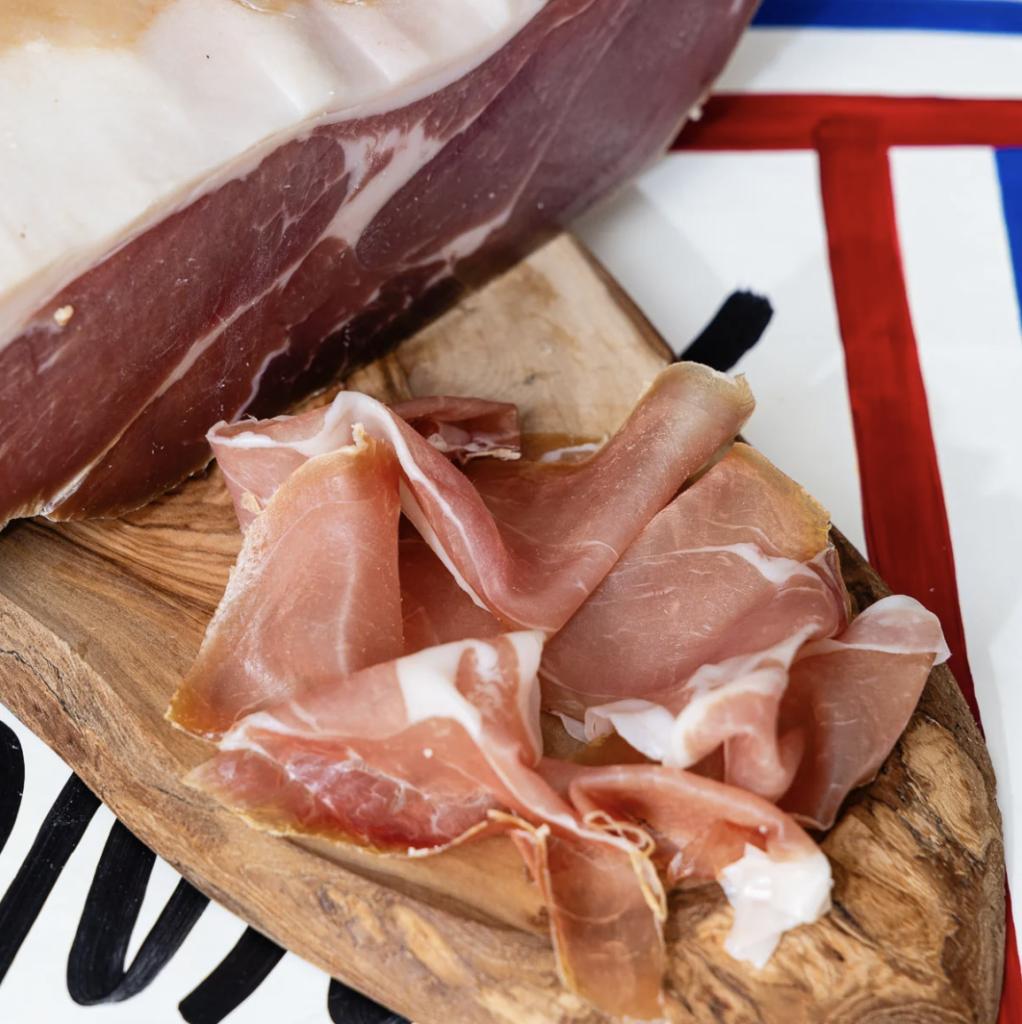Excerpt from Ari’s Top 5 enews
The wonderfully tasty, carefully cured ham of Western France

We served thin slices of this special cured ham at the “Best of 2023” food tasting I did at the Deli back in December, and it’s been on my mind ever since. It is superbly tasty!
Bayonne ham is the traditional cured ham of the western part of France, around, of course, the town of the same name. As Prosciutto di Parma is for the town of Parma, Bayonne ham is the traditional dry cured pork around the area of Bayonne. Up until a few years ago, the only way for an American to access Bayonne ham was to travel to the region in which it was made. It’s only in the last year or so that it’s gotten USDA permission to ship to the States. We’re buying it from Maison Agour, a small firm that started in 1981, the year before we opened the Deli. Located in the small town of Hélette, or in Basque, Heleta, which is all the way down by the border with the Basque Country of Spain, and about two and a half hours drive to the east of the bigger city of Biarritz. Like us, they’re very committed to both community and traditional food. Agour’s founder, Jean Etxeleku, has laid out “Live and work in the Basque Country!” as a guiding mission for the firm. Etxeleku calls the company, “A project for Basque people, with Basque people.” And, I’ll add, making Basque products. Agour started with traditional cheese and added ham-making a few years later. Today, as in 1981, the firm has stayed true to its original values. As they say, “[We are] bound by our confidence in our culture and led by the common goal to share the traditions and gastronomy of the Basque Country, carried to us by previous generations.”
Jambon de Bayonne is nothing more than pork, salt, and the influence of the breezes blowing in off the Atlantic. Whole fresh hams, traditionally taken from pigs slaughtered near the end of the calendar year, are heavily coated with PGI-protected salt harvested from Salies-de-Béarn spring water from the local Adour River basin. After a few months, the salt is washed off, and the hams are hung to rest, drying at cold temperatures for another few months. After that, the hams are moved to a warmer aging room where they’re hung to cure. This “summer sweat” that the hams go through is a big contributor to the development of their flavor. Natural molds appear as they do on all traditionally cured hams and cheeses. At the end of the process, the mold is rubbed off but its impact remains an important part of the flavor development. All the hams are, of course, checked for quality before getting marked with the symbol of the traditional Basque cross. We get the hams here after they’ve been aged for about 12 to 18 months.
I like the Bayonne best simply eaten as is! The aroma is amazing. Deep, rich, round, the quintessential essence of cured pork; its flavor is a lovely coming together of salt and sweet and savory. Sliced thin and eaten as an appetizer, a quarter pound will serve two—be sure to serve at room temperature so you can access and appreciate the full flavor of the carefully cured ham. You can also add slivers of the ham to salad or pasta. Goes great with really fine dried figs we’ve been getting from Afghanistan, the remarkable Rancho Meladuco dates from California, hazelnuts, walnuts, and of course with Bakehouse bread! Thin slices of Bayonne ham are great on a baguette, either just as it is, or spread first with some cultured butter (go by the Roadhouse and buy a tube of that above-mentioned, very very good Vermont Creamery cultured butter with French sea salt!) Bottom line? Bayonne ham is a terrific taste of France’s southwest that can brighten up any dark winter day!



